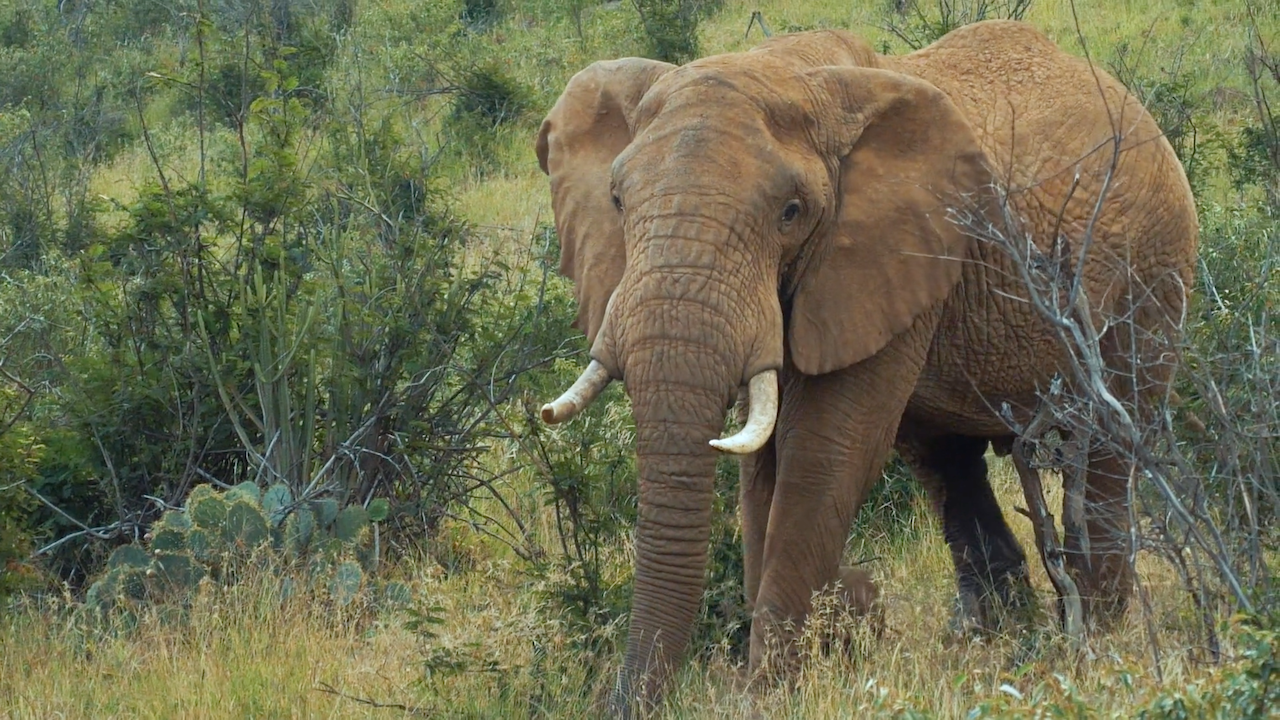Zimbabwe’s growing elephant population has nowhere to go
Elephants in Gonarezhou National Park are afraid of hunters across the border in Mozambique, but numbers are already higher than the park can hold

Your support helps us to tell the story
From reproductive rights to climate change to Big Tech, The Independent is on the ground when the story is developing. Whether it's investigating the financials of Elon Musk's pro-Trump PAC or producing our latest documentary, 'The A Word', which shines a light on the American women fighting for reproductive rights, we know how important it is to parse out the facts from the messaging.
At such a critical moment in US history, we need reporters on the ground. Your donation allows us to keep sending journalists to speak to both sides of the story.
The Independent is trusted by Americans across the entire political spectrum. And unlike many other quality news outlets, we choose not to lock Americans out of our reporting and analysis with paywalls. We believe quality journalism should be available to everyone, paid for by those who can afford it.
Your support makes all the difference.By Farayi Machamire for Zim Morning Post
Gonarezhou National Park, located in southeastern Zimbabwe, faces a habitat time bomb amid a growing elephant population.The Government has estimated the annual growth rate at five percent .
The Park, which covers just more than 1,930 sq miles, incorporating the famed Chilojo Cliffs, is currently home to 9,000 elephants despite authorities saying it has an ecological carrying capacity of 3,000 jumbos.
Zimbabwe Parks and Wildlife Authority officials say they have tried to allow elephants to migrate freely between Gonarezhou in Zimbabwe and national parks of Limpopo in neighbouring Mozambique, but myriad socio-ecological factors, including unsustainable hunting practices, are pushing them back.
“Elephants are very intelligent and while they might roam out of Gonarezhou, they soon return back to the Park as us and our partners have created a safe haven for them,” said Fulton Mangwanya, Director-General at Zimbabwe Parks and Wildlife Authority (ZimParks).
“Gonarezhou is along the international boundary and any increased poaching pressure of key species in neighbouring countries has implications on the Park,” Mangwanya continued.
“The landscape is connected under the Great Limpopo Transfrontier Conservation Area umbrella, and to add to that landmines in the Sengwe Tshipise corridor cut off the natural migration route for the growing elephant herd,” he added.
“Even in north-west Matabeleland, in the landscape of the five-country Kavango-Zambezi Transfrontier Conservation Area (KAZA TFCA), the situation is similar as the presence of landmines makes large areas a lethal habitat for both animals and people.”
KAZA TFCA straddles Angola, Botswana, Namibia, Zambia, and Zimbabwe, which are home to 70% of the remaining savanna elephants on the African continent, covering 200,000 sq miles.
The KAZA region is set to conduct a joint aerial survey, results of which member states hope will contribute significantly towards decisions on the sustainable management of KAZA’s elephant population.
The survey will be conducted in Angola, Botswana, Namibia, Zambia, and Zimbabwe, starting in July – August 2022 and run for four months, with an expected cost of nearly US$3 million.
“The survey is a fundamental component of the KAZA Strategic Planning Framework for the Conservation and Management of Elephants. It is also one of the action points of the 2019 Kasane Elephant Summit and a directive by our Heads of State,” said Teofilus Nghitila,
Executive Director in Namibia’s Ministry of Environment, Forestry, and Tourism, during a press statement in November.
Nghitila noted the IUCN Red List had acknowledged that savanna elephants are stable or increasing in KAZA TFCA, unlike on the rest of the continent, “which is a clear testament of the positive outcomes of the management interventions within KAZA.”
The KAZA TFCA elephant population is the largest contiguous transboundary elephant population in the world, inhabiting KAZA’s diverse landscape which is home to an estimated population of two million people.
ZimParks says while the increase in elephant populations in Zimbabwe’s South-East Lowveld is indicative of the safety and security offered by the protected area, authorities are cognisant that large elephant populations could morph into a threat to the survival of other species as signs of population response to those ecological facts start to unfold.
“Increasing elephant populations destroy their own habitat as well as that of other species leading to some animals spilling over to human settlements resulting in human wildlife conflict,” said Mangwanya.
Strikingly, while elephant populations are fighting to stay in, surveys indicate that over half of Zimbabwe’s human population is estimated to have given a great deal of thought to emigrating from the southern African country, both legally and illegally, due to economic uncertainty.
This article is reproduced here as part of the African Conservation Journalism Programme, funded in Angola, Botswana, Mozambique, and Zimbabwe by USAID’s VukaNow: Activity. Implemented by the international conservation organisation Space for Giants, it aims to expand the reach of conservation and environmental journalism in Africa, and bring more African voices into the international conservation debate. Read the original story here.
Join our commenting forum
Join thought-provoking conversations, follow other Independent readers and see their replies
Comments